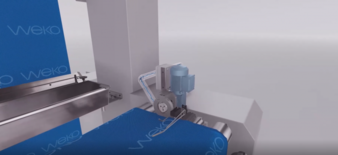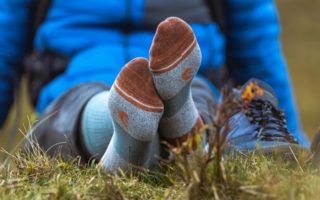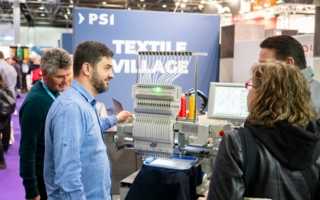06/01/2022 – Cutting — auf Deutsch lesen
Modern edge trimming systems from Weko
The process requirements for textile goods and the quality requirements of the customers have increased. And with it the requirements for edge trimming systems.
Cutting the edges when processing knitwear is part of everyday life in most companies. And the reason for this is not just being able to deliver a visually flawless roll of goods. The needled goods should be delivered without pinholes and, if necessary, brought to a certain predetermined width.
In subsequent processes, a rolled edge is also rather counterproductive: the goods must be neatly placed on a cutting table without the edges standing up. Rotary printing requires printing on a flat surface. And with today’s current textile digital printing, not feasible with a rolled-up edge.
Safety first
Modern edge trimming systems have to demonstrate stricter safety standards. These systems work with two cutting disks, which together mimic rotating scissors. This not only ensures greater safety, the low rotation also avoids heating in the cut area and thus the sticking of synthetic goods on the “knife”.
The service life of the cutting disks is also positively influenced: today, such systems work for months without the need to sharpen or change the cutting disks, thanks to the use of special steel alloys and thermal treatments. Machine stops are reduced and productivity increases.
Saving resources
Sustainability plays a major role when it comes to edge cutting: only the most essential items may be cut in order to save resources. For this purpose, manufacturer Weko presented an edge trimming system with edge tracking to the market in 2011.
The routing of goods in edge trimming systems has also changed over the past few years. Weko developed a system in which the edge scraper, responsible for rolling out the edges, is independent of the movable cutting head, thus always guarantees the same stripping quality regardless of the direction of travel indicated by the sensors. Additional stabilizing cylinders also ensure that the goods run through correctly.




